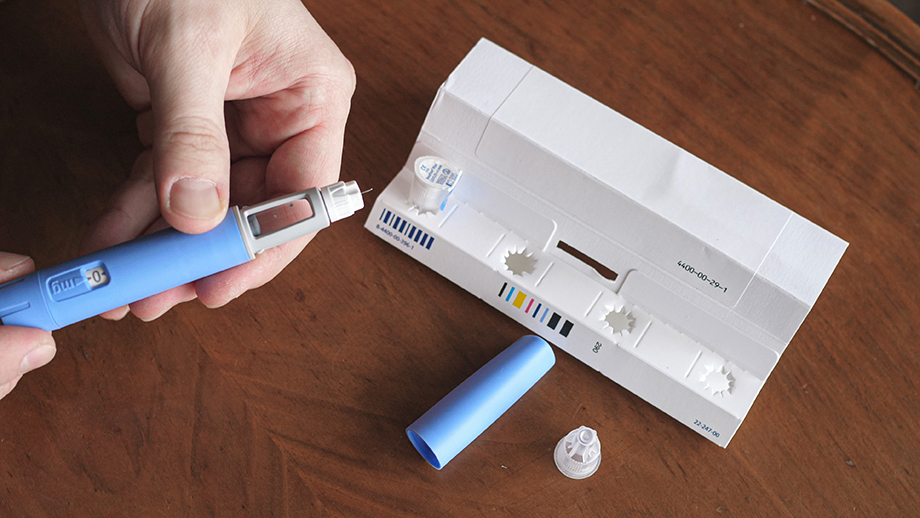Ozempic, a popular medication for managing type 2 diabetes, has gained attention for its effectiveness in controlling blood sugar levels and aiding in weight loss. However, it’s essential to understand the Ozempic side effects that may occur with its use. This article will provide an overview of the potential side effects, how to manage them, and when to consult a healthcare professional.
Understanding Ozempic
Ozempic (semaglutide) is a glucagon-like peptide-1 (GLP-1) receptor agonist that helps lower blood sugar levels by increasing insulin production and decreasing appetite. While many people benefit from this medication, being informed about the Ozempic side effects is crucial for safe and effective treatment.
Common Ozempic Side Effects
Many users experience mild to moderate side effects when taking Ozempic. Here are some of the most common Ozempic side effects:
Nausea
Nausea is one of the most frequently reported Ozempic side effects. It may occur as your body adjusts to the medication, especially during the first few weeks of treatment. Taking Ozempic with food can help alleviate this symptom.
Vomiting
Along with nausea, some individuals may experience vomiting. If this side effect persists or worsens, consult your healthcare provider for guidance.
Diarrhea
Diarrhea is another common side effect of Ozempic. Staying hydrated and maintaining a balanced diet can help manage this symptom.
Constipation
Contrary to diarrhea, some users may experience constipation while on Ozempic. Increasing fiber intake and drinking plenty of fluids can help mitigate this effect.
Abdominal Pain
Some individuals report experiencing abdominal pain or discomfort. If the pain is severe or persistent, it’s important to discuss it with your healthcare provider.
Headache
Headaches can also occur as a side effect of Ozempic. Staying hydrated and managing stress may help reduce their frequency.
Dizziness
Dizziness may arise, especially if blood sugar levels drop too low. Monitoring your blood sugar and adjusting your medication as necessary can help prevent this side effect.

Serious Ozempic Side Effects
While most Ozempic side effects are mild, there are serious risks associated with this medication that warrant immediate medical attention. These include:
Pancreatitis
Pancreatitis, or inflammation of the pancreas, is a serious condition that can occur with Ozempic use. Symptoms include severe abdominal pain that may radiate to the back, persistent nausea, and vomiting. If you experience these symptoms, seek emergency medical help.
Thyroid Tumors
Ozempic has been associated with an increased risk of thyroid tumors in animal studies. Although it’s unclear if this risk extends to humans, report any unusual lumps or swelling in the neck to your healthcare provider.
Kidney Problems
Some individuals may experience kidney problems while taking Ozempic, especially if they become dehydrated. Symptoms may include decreased urination or swelling in the legs and ankles.
Allergic Reactions
Severe allergic reactions to Ozempic are rare but can occur. Symptoms may include rash, itching, difficulty breathing, or swelling of the face, lips, or tongue. If you experience any of these symptoms, seek immediate medical attention.
How to Manage Ozempic Side Effects
Understanding how to manage Ozempic side effects can help improve your overall treatment experience. Here are some tips:
Start Slowly
If you are new to Ozempic, starting with a lower dose and gradually increasing it can help your body adjust to the medication, reducing the likelihood of side effects.
Stay Hydrated
Drinking plenty of fluids can help manage common side effects like nausea, diarrhea, and constipation. Aim for at least eight glasses of water per day.
Eat a Balanced Diet
A well-balanced diet rich in fruits, vegetables, and whole grains can help mitigate digestive side effects. Eating smaller, more frequent meals may also help.
Communicate with Your Healthcare Provider
Maintaining open communication with your healthcare provider is essential. Report any side effects, especially if they persist or worsen, to ensure you receive the best possible care.
Monitor Your Blood Sugar Levels
Regularly checking your blood sugar levels can help you identify patterns and make necessary adjustments to your treatment plan.
When to Seek Medical Help
It’s crucial to recognize when to seek medical help regarding Ozempic side effects. If you experience any of the following, contact your healthcare provider immediately:
- Severe abdominal pain
- Persistent vomiting or diarrhea
- Signs of dehydration (dizziness, dry mouth, or decreased urination)
- Swelling in the face or throat
- Unexplained weight loss
Conclusion
While Ozempic can be an effective treatment for managing type 2 diabetes and aiding in weight loss, it’s essential to be aware of the potential Ozempic side effects. By understanding these side effects and knowing how to manage them, you can optimize your treatment and improve your quality of life. Always consult your healthcare provider for personalized advice and guidance.
